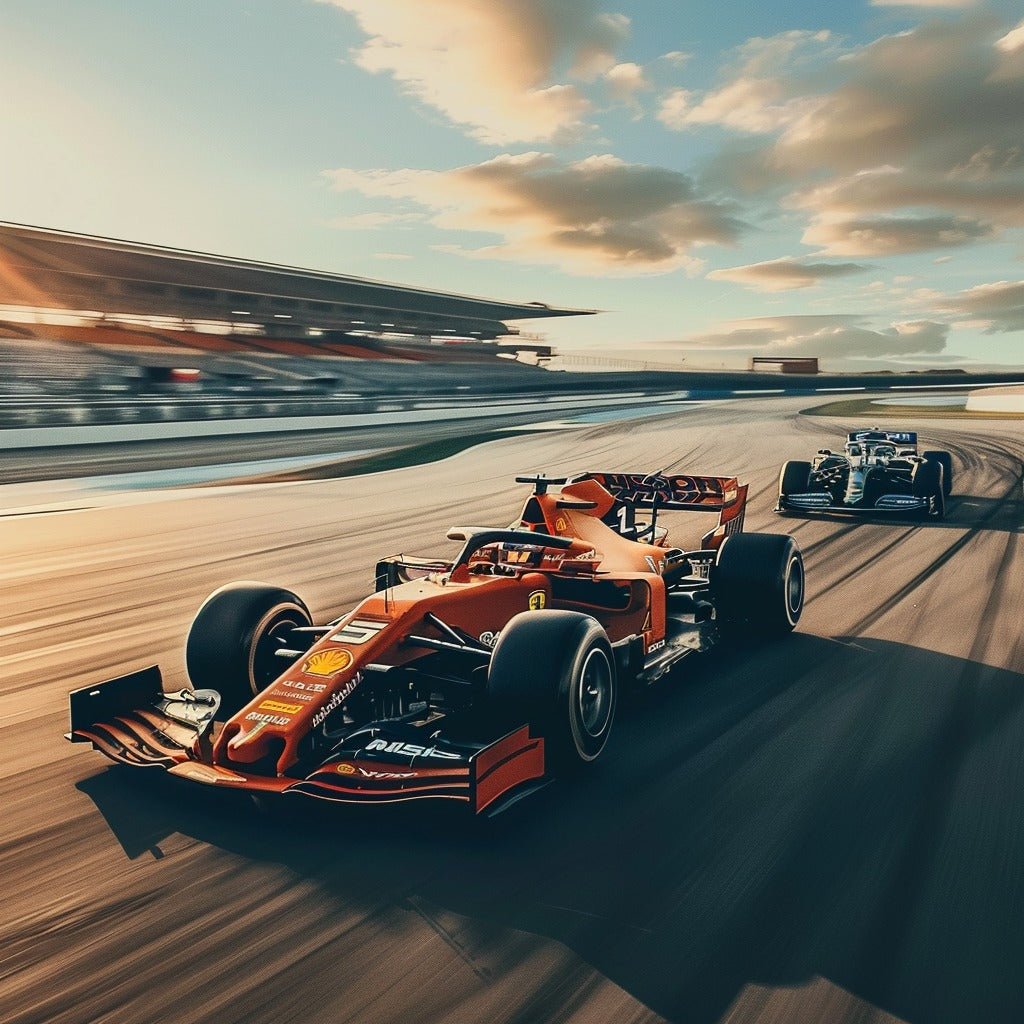F1 track art encapsulates the artistic representation of Formula 1 circuits, transforming their complex layouts and iconic features into visual statements. This genre appeals to motorsport enthusiasts and art collectors alike, celebrating the unique character of each racing venue and its contribution to the sport’s heritage.
Styles and Mediums
Artists approach F1 track art through various styles and mediums, each offering a different perspective on these hallowed grounds:
- Minimalist Interpretations: Often focusing on the pure, flowing line work of the track layout, these pieces highlight the geographic signature of circuits. Renderings can range from sleek digital prints and posters to laser-cut wood or metal sculptures, emphasizing the track’s form.
- Abstract Expressions: Some artists use color, form, and texture to convey the speed, energy, and dynamism associated with specific tracks or famous corners like Spa-Francorchamps’ Eau Rouge or Monza’s Parabolica. These works move beyond literal representation to evoke the sensation of racing.
- Detailed Renderings: This category includes highly detailed illustrations, paintings, or digital graphics. These pieces may incorporate elements such as elevation changes, kerbing details, surrounding landscapes, or even faint traces of optimal racing lines, offering an intricate study of the track’s architecture.
- Sculptural and 3D Forms: Tracks are also realized as three-dimensional objects, providing a tactile and spatial interpretation of their contours, cambers, and elevation changes. Materials vary widely, from polished metals and acrylics to layered wood or concrete.
- Data-Driven Visualizations: A niche but growing area involves artistically presenting telemetry data, such as speed traces, G-forces, or gear shifts overlaid on the track map, creating a visual narrative of a lap.
The Essence and Appeal
The appeal of F1 track art lies in its ability to distill and celebrate the essence of a circuit. For enthusiasts, it serves as a sophisticated homage to legendary venues, iconic corners, and memorable racing moments. The inherent geometric beauty, challenging technical sections, and flowing lines of the track layouts themselves provide rich subject matter for artistic exploration.

Key elements often emphasized in F1 track art include the rhythm and flow of the layout, the unique character of specific corner sequences (e.g., Silverstone’s Maggotts and Becketts, Suzuka’s ‘S’ Curves), and sometimes subtle nods to a track’s specific history or national identity. This art form provides a static, contemplative counterpoint to the high-octane, transient nature of F1 racing, allowing for a deeper appreciation of the stages upon which motorsport dramas unfold.
